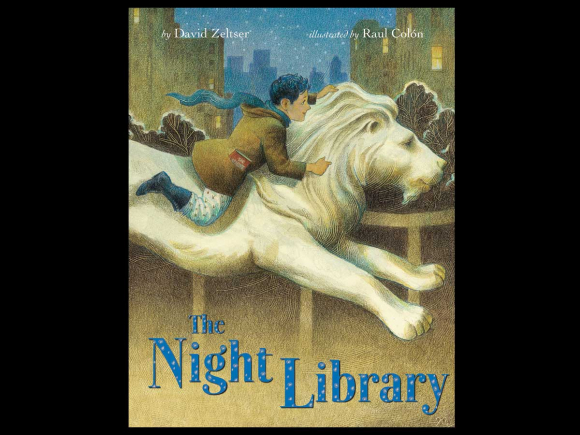Take the edge off winter with story hour

It’s late Saturday afternoon, February, that hour before supper when the little ones go bananas, and the 5-year-old and his sister are driving you bonkers, to the point where you want to plop them down in front of the television watching “Arthur” while you slosh some red wine into a glass and smoke a cigarette, though you only drink wine with supper or in the evenings, and you gave up the cigs years ago in college.
When bellowing, red-faced Joey chases the howling Samantha through the living room for the umpteenth time — she’s clutching a handful of the crayons he was coloring with, which technically belong to her — you glare at them through slitted eyes and just want to scream, “Stop! For the love of heaven and all that’s holy, stop!” That tactic sometimes works, though you risk damaging your vocal cords and bringing on tears. Yours, not theirs.
It’s time for the childhood chill pill.
It’s time to read them a story. If it won’t spoil their dinner, you might even throw in a cup of hot chocolate to add to the moment.
David Zeltser’s “The Night Library” (Random House, 2019, 32 pages) might be just the ticket for riding on the peace train. Beautifully illustrated by Raul Colon, “The Night Library” tells the story of a boy who says he doesn’t like reading and books anymore, and who is whisked away by a lion named Fortitude in the middle of the night to the New York Public Library. There the books begin whirling around, acting out scenes from “The Cat in the Hat” and “The Polar Express.” There we also learn that the boy’s grandpa, who used to read to him, has died. This sounds like a sob story, but Zeltser instead makes it a wonderful tale of the magic of books.
“How to Read to a Grandma or Grandpa” (Alfred A. Knopf, 2020, 32 pages) shows kids how to share a book or a story with a grandparent, even by way of Zoom. Joey and Samantha may not be reading yet, but they’ll still get a kick out of the illustrations by Lee Wildish and the story by Jean Reagan. There’s some great advice here, too, about read-alouds, such as “Get some pillows and blankets so you can snuggle up to read,” where Grandpa is depicted as bringing a tray of chocolate chip cookies to the literary frolic. The part where Grandpa is looking for his glasses also made me smile, as I reenact that scene every time my grandkids pay a visit.
Related Items
In Noah Klocek’s “Dreamland” (Candlewick Press, 2018, 40 pages), Amelie “loved everything about bedtime. She loved wrapping up in her favorite blanket. She loved listening to bedtime stories. More than anything, she loved to dream.”
And we follow Amelie as she pursues her nighttime dreams, some of them dark, some “beyond the whistle of a distant train,” until she finally finds herself in her favorite dreams, which means sleeping in her bedroom. With their blend of light and shadows, Klocek’s pictures should entrance the younger set.
“But wait, hang on — YES! THAT’S IT! It doesn’t matter where you sit … a book is best anywhere … a book is best when you SHARE.”
That’s the message in Leigh Hodgkinson’s “A Place to Read” (Bloomsbury, 2017, 32 pages). We follow a young reader looking for a comfortable place to enjoy a book away from noise, slippery chairs, a room that’s not too hot and not too cold. Hodgkinson’s bright and vivid illustrations should attract the attention of the three to six year old crowd.
And for the elementary aged children, or even middle-schoolers, you might consider “Fairy Tale Feasts: A Literary Cookbook for Young Readers & Eaters” (Crocodile Books, 2006, 200 pages). I stumbled across this book while rambling through my public library. With fairy tales retold by the prolific and renowned writer Jane Yolen, recipes by Heidi E.Y. Stemple, and illustrations by Philippe Beha, Fairy Tale Feasts combines classic stories from childhood with recipes appropriate to these tales along with some extra facts about the foods featured in those recipes and the lively illustrations of Philippe Beha.
Accompanying Yolen’s retelling of “The Little Mermaid,” for example, we find Stemple’s recipe for Seaweed Stuffed Shells and some fun facts on the meaning of the word pasta and the history of dough and spaghetti in America. (There is one amusing misprint in this chapter, in which the authors have Thomas Jefferson introducing the first macaroni-making machine to America from France in 1879. Jefferson did import the macaroni machine and took a keen interest in pasta, but by 1879 our third president was long in the grave.)
Anyway, when the kids get rowdy, story-time can make for a great time-out. If Grandma or Grandpa are around, recruit them as your reinforcements, and while you make the supper, ask them to share a book with the children. Or have the older kids read to the young ones.
And later on in the evening, when Joey and Samantha are tucked away and fast asleep, pour yourself a cup of cocoa, or that glass of red wine, and fall into a book.
Tis the season ….
(Jeff Minick reviews books and has written four of his own: two novels, “Amanda Bell” and “Dust On Their Wings,” and two works of nonfiction, “Learning As I Go” and “Movies Make the Man.” This email address is being protected from spambots. You need JavaScript enabled to view it..)









